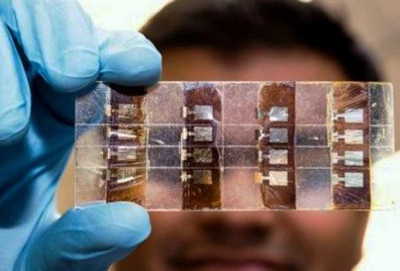21 Nov 2017
Italian subsidiary of Australian former Dyesol company is partnered with CEA, EPFL University of Rome and Fraunhofer.

Greatcell Solar was awarded €700,000 to develop Perovskite Solar Cell technology.
The H2020 project is for the development of Perovskite Solar Cell (PSC) technology on flexible substrates and aligns closely with Greatcell’s existing technology development plan, particularly that being conducted at Solliance in the Netherlands. The research will investigate advanced technology for higher efficiencies, longer life and improved encapsulation of PSC-enabled flexible substrates, such as metals and polymers.
Since the end of June 2017, Greatcell Solar has been the company name for what was previously Dyesol. According to the company, Greatcell Solar "signifies a new era of commercial opportunity and is more appropriate for our third generation solar PV technology".
Cutting energy costs
In its latest funding win announcement, Greatcell Solar stated, "We have a multi-generational technology development plan with the objective of producing PV technology that genrates electricity for as low as 3.5 US cents per kWh or 25 US cents per watt-peak (Wp). This is significantly lower than existing, competitive PV technologies."
The H2020 Apolo project also includes the following partners: the Alternative Energies & Atomic Energy Commission of France, École Polytechnique Fédérale De Lausanne, University of Rome Tor Vergata and Fraunhofer Research of Germany.
Greatcell added that it would like to express its gratitude to the European Union for its strong financial support of its international technology development activities.
Greatcell and perovskiteThe company explained its particular interest in this widely-researched energy conversion material as follows: "PSC technology is based on applying low cost materials in ultrathin layers encapsulated by protective sealants. Greatcell Solar’s technology has lower embodied energy in manufacture, produces stable electrical current, and has a strong competitive advantage in low light conditions relative to incumbent PV technologies.
"This technology can be directly integrated into buildings to achieve highly competitive building-integrated photovoltaics. The key material layers include a hybrid organic-inorganic halide-based perovskite light absorber and nano-porous metal oxide of titanium oxide. Light striking the absorber promotes an electron into the excited state, followed by a rapid electron transfer and collection by the titania layer. Meanwhile, the remaining positive charge is transferred to the opposite electrode, thereby generating al current."
| © 2024 SPIE Europe |
|